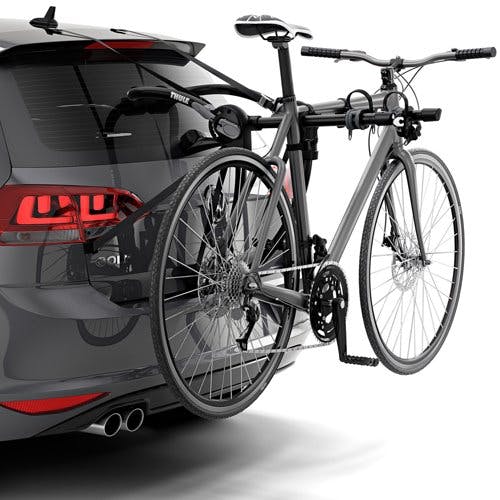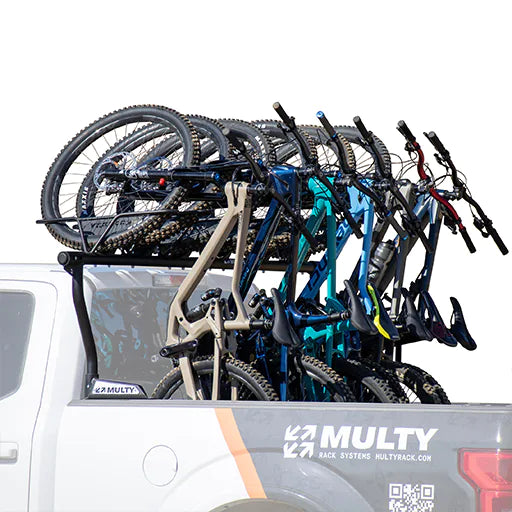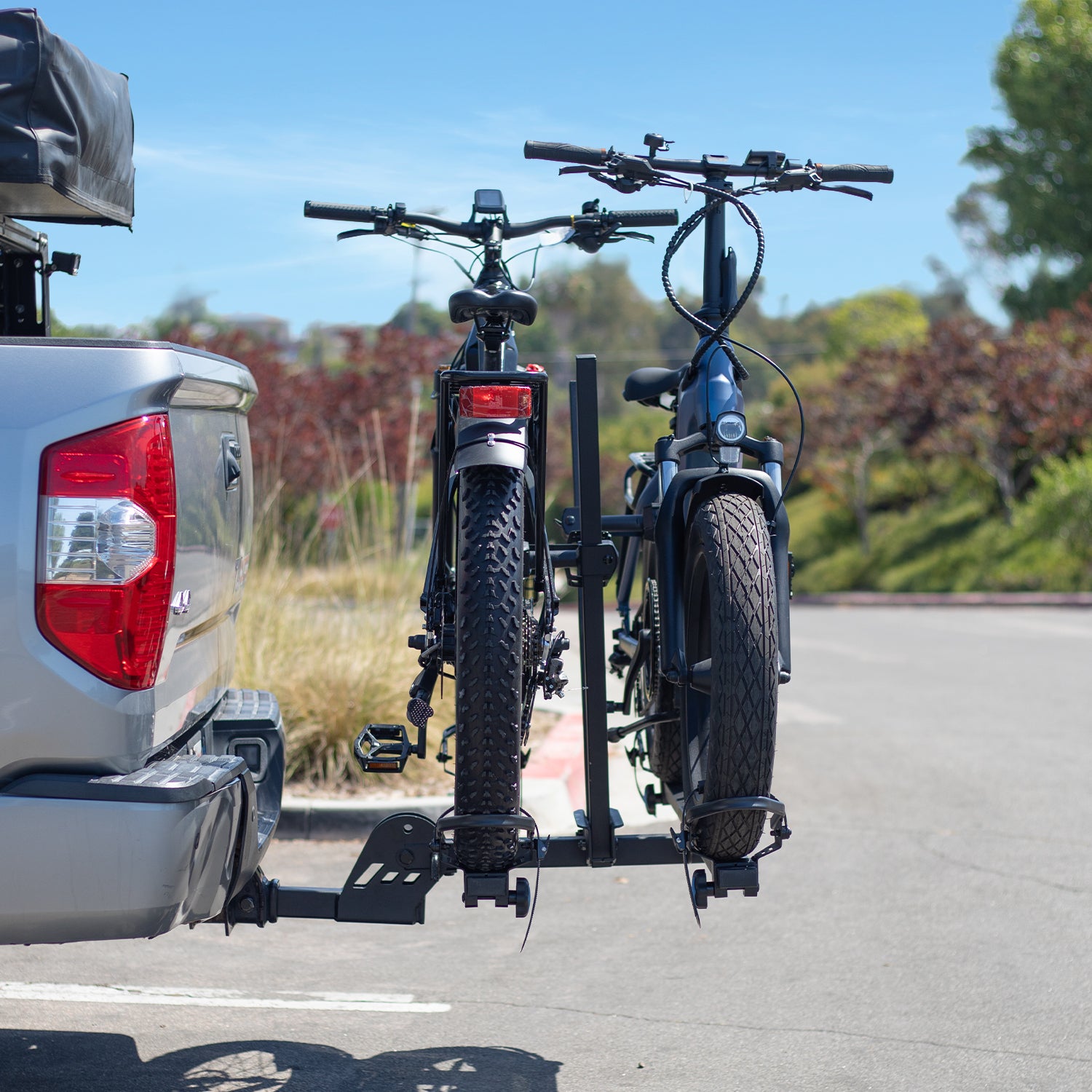Bike Rack Installation Tips Every Beginner Should Know
Explore the Different Sorts Of Bike Shelf and Their Practical Applications for Biking Fanatics
The selection of bike Racks offered today deals with the diverse requirements of cycling enthusiasts. From freestanding to wall-mounted options, each design provides distinct benefits for storage and transport. Portable Racks additionally offer flexibility for those on the relocation. Nevertheless, selecting the excellent type requires mindful consideration of details needs. Recognizing these aspects can make a substantial distinction in both ease and safety and security for cyclists. What are the vital considerations when choosing a bike rack?
Understanding Bike Shelf Types
Different kinds of bike Racks provide to the diverse requirements of bicyclists. Amongst one of the most typical are freestanding racks, usually discovered in urban locations, which enable numerous bikes to be safeguarded in a portable area. Wall-mounted Racks offer those with minimal floor space, supplying a reliable remedy for home storage. Furthermore, mobile bike racks, designed for convenience of transport, allure to bikers that frequently take a trip.

Hitch-Mounted Bike Racks
Hitch-mounted bike Racks supply a practical remedy for moving bikes, however understanding their installation process is necessary for efficient use. Customers need to also think about the weight capacity of these Racks to ensure security and security while traveling. Furthermore, compatibility with numerous automobile kinds plays a considerable role in identifying the appropriate shelf for specific requirements.
Installation Refine Overview
When picking a hitch-mounted bike shelf, comprehending the installment procedure is vital for guaranteeing security and ease. Initially, the individual has to confirm compatibility between the car and the rack's hitch receiver. The majority of Racks are made for either 1.25-inch or 2-inch receivers. After choosing the proper shelf, the installment starts with protecting the rack right into the hitch receiver and tightening the drawback pin or bolt to avoid activity. Appropriate positioning is critical to determine the shelf does not block tail lights or certificate plates. Once mounted, it is recommended to examine for stability by using slight pressure to the rack. Adhering to the producer's instructions will certainly assure an effective installation, advertising a safe cycling experience on the road.
Weight Capability Considerations

Compatibility With Vehicle Kind
Selecting the appropriate bike shelf entails verifying compatibility with numerous automobile types. Hitch-mounted bike Racks are created to affix to the rear drawback receiver of a lorry, making them ideal for a large range of automobiles, SUVs, and vehicles. It is crucial to inspect the drawback course and weight ability to validate a correct fit. Most hitch-mounted Racks work with 1.25-inch and 2-inch receivers, suiting automobiles geared up with proper hauling capabilities. In addition, individuals ought to consider their vehicle's height and style, as some Racks may block rear accessibility or need added clearance. Inevitably, recognizing automobile specs verifies that cycling enthusiasts can firmly transport their bikes without jeopardizing safety and security or capability.
Trunk-Mounted Bike Racks
Trunk-mounted bike Racks use a functional option for cyclists looking for an effective method to transfer their bikes. Recognizing the installment process is essential for excellent usage, as improper arrangement can cause safety problems. Furthermore, considering the weight ability of these Racks assurances that they can firmly hold the bikes without danger of damage or failing during transportation.
Installation Refine Summary
Many biking enthusiasts value the convenience of trunk-mounted bike Racks for their convenience of use and flexibility. The installment procedure generally starts with acquainting and unpacking the rack oneself with its components. Most Racks come with flexible straps and hooks created to secure them to the car's trunk or hatch. Customers need to verify the rack is located properly, straightening it with the car's shapes for stability. Complying with the manufacturer's directions, the bands are after that tightened safely, assuring a snug fit. It's essential to examine that the rack does not obstruct the car's lights or certificate plate. Confirming that all connections are safe prior to filling bikes is vital for risk-free transportation. Proper setup improves both safety and security and performance throughout cycling trips.
Weight Capacity Considerations
When thinking about a bike shelf for moving bicycles, weight capacity is an essential variable that can not be overlooked. Trunk-mounted bike Racks usually carry weight limits that vary depending upon the design and style. It is crucial for customers to examine these requirements to assure they do not go beyond the advised weight, as doing so can jeopardize both security and automobile stability. Many trunk-mounted Racks can support 1 or 2 bikes, with a mixed weight ability varying from 70 to 120 extra pounds. Bicyclists must likewise think about the weight of their bicycles, particularly if they have much heavier designs like electric bikes. Appropriately matching the shelf's weight capability with the bikes' weights assures a secure and safe transport experience.
Roof-Mounted Bike Racks
Roof-mounted bike Racks use a structured remedy for transferring bicycles, providing cyclists with the advantage of making the most of freight room. These Racks are made to hold bikes firmly atop the automobile, enabling for simple access to the rear of the auto and avoiding obstructions to the license plate Bike Rack or tail lights. They are perfect for individuals that regularly take a trip with their bikes, as they can accommodate numerous bicycle styles and sizes.
Installment usually entails connecting the shelf to the vehicle's crossbars, making certain a steady and secure fit. Roof-mounted Racks are commonly aerodynamic and lightweight, which can cause boosted fuel effectiveness contrasted to various other kinds of racks. Nonetheless, customers should think about the elevation of their lorry when loading and dumping bikes, along with potential difficulties when getting in garages or low-clearance areas. Generally, roof-mounted bike Racks use a effective and functional alternative for avid bicyclists on the move
Wall-Mounted Bike Racks
Wall-mounted bike Racks provide an effective remedy for cyclists seeking to optimize limited room while firmly saving their bikes. These Racks are excellent for urban dwellers or those with small garages, as they elevate bikes off the ground and utilize upright room. Made from tough products, wall-mounted choices can fit different bike types, including hill, hybrid, and road bicycles.
Setup is uncomplicated, making it possible for customers to install them in garages, basements, or perhaps outside areas. Many layouts enable one or several bikes, making them versatile for specific or household use. Furthermore, some wall-mounted Racks featured integrated locks or security functions to hinder burglary, enhancing tranquility of mind for bicyclists.
Portable Bike Racks
Mobile bike Racks provide bikers a hassle-free and versatile solution for transporting their bikes. These Racks are designed for very easy installation and elimination, making them optimal for those that need to regularly change in between places or lorries. Compact and commonly lightweight, mobile bike Racks can be easily kept in a trunk or garage, alleviating the problem of permanent setups.
There are various sorts of mobile bike racks, including hitch-mounted, trunk-mounted, and roof-mounted options, each dealing with different lorry types and bicyclist choices. Hitch-mounted Racks give stability and availability, while trunk-mounted Racks are frequently a lot more budget-friendly and flexible. Roof-mounted Racks are fantastic for taking full advantage of freight room but may need some training.
Picking the Right Bike Rack for Your Requirements
Just how can one determine the finest bike shelf to match their specific cycling requirements? Determining the appropriate bike shelf involves assessing numerous variables. First, one should think about the sort of vehicle used for transport, as Racks are created for various installing systems, such as roof, drawback, or trunk. Next off, the number of bikes to be carried is vital; some Racks fit only one, while others can hold multiple bikes successfully. In addition, figuring out the weight and framework style of the bikes is substantial, as specific Racks are better matched for larger or distinctively shaped bikes. Intended usage should be taken right into account; constant tourists may prefer an extra mobile choice, while occasional users may prioritize simplicity and convenience of installment. By meticulously considering these factors to consider, people can pick a bike shelf that fulfills their needs and improves their cycling experience.

Regularly Asked Inquiries
Can Bike Racks Accommodate Different Bike Sizes and Styles?
Bike Racks differ in style, enabling accommodation for various bike dimensions and styles. Some Racks include adjustable components, while others are especially customized for sure bikes, making sure safe storage and very easy availability despite the bike's requirements.
Exactly how Do I Correctly Safeguard My Bike on a Shelf?
To appropriately protect a bike on a rack, one ought to guarantee the structure and wheels are securely secured using locks or bands, looking for security and stopping movement throughout transportation to prevent damages.
Are Bike Racks Easy to Remove and set up?
Bike Racks differ in setup intricacy, but several are developed for user-friendliness. Removable models commonly provide uncomplicated setup and elimination, while permanent installations might call for tools and even more time, depending upon the certain layout.

What Materials Are Bike Racks Usually Made From?
Bike Racks are normally made from products such as steel, plastic, and light weight aluminum. Bike Rack. Steel provides resilience and stamina, while aluminum offers lightweight transportability. Plastic alternatives are usually made for convenience of usage and cost
Do Bike Racks Affect Fuel Effectiveness When Driving?
When driving is significant, the question of whether bike Racks influence gas effectiveness. Research studies suggest that bike Racks can enhance aerodynamic drag, possibly bring about decreased gas effectiveness, especially at greater speeds or with added weight.
After choosing the proper shelf, the installation begins with protecting the rack into the hitch receiver and tightening the drawback pin or bolt to prevent activity. Roof-mounted Racks are light-weight and commonly aerodynamic, which can lead to boosted gas efficiency contrasted to other kinds of racks. Hitch-mounted Racks give security and ease of access, while trunk-mounted Racks are often extra economical and functional. Next off, the number of bikes to be carried is necessary; some Racks fit just one, while others can hold multiple bikes successfully. Bike Racks vary in layout, making it possible for lodging for various bike dimensions and styles.